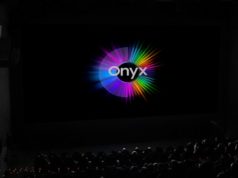AT&T’s experimental technology uses plastic antennas positioned along medium-voltage lines for high speeds.
AT&T on Tuesday announced a low-cost, high-speed wireless internet technology that relies on plastic antennas positioned along medium-voltage power lines.
The signals will not travel through the conductive materials inside the power lines, as with more expensive technologies that were tried and mostly failed a decade ago, AT&T executives said on a conference call.
Instead, the plastic antennas will be attached to the power lines and serve as a mesh network to distribute signals to homes and businesses. To test the technology, AT&T is looking for a location somewhere in the next year with a favorable regulatory environment, since the carrier would need to partner with an existing electric utility.
The project, called AirGig, relies on more than 100 patents, according to an AT&T statement. There is no direct electrical connection to the power lines, although network components could receive their needed power through inductive physical principals just by their proximity to the lines, AT&T Chief Technology Officer Andre Fuetsch explained.
AT&T said the testing will decide what frequency AirGig will use for commercial deployment, which could occur sometime around 2020, after the carrier rolls out 5G wireless. The frequency AT&T uses will affect the range of the signal and the speed, as well as whether it is over a licensed or unlicensed band.
By using power lines, AirGig avoids the expense of digging trenches to lay fiber optic cable. A utility company would be able to use the technology to help spot problems on its power lines from something like a downed tree.
“It’s a transformative technology that delivers low-cost and multigigabit speeds using power lines,” said John Donovan, chief strategy officer for AT&T. “There’s no need for enhancements for new towers, and it’s over existing infrastructure.”
Aside from saying it is low-cost, AT&T didn’t offer details. A location for the field testing will be offered soon, officials said.
AirGig has already been tested in outdoor locations on campus settings. “We’ve had it up and running 4k video and cameras on campuses for quite some time,” Donovan said.
He said the trial could be in an area where existing broadband is expensive, even in the U.S.







